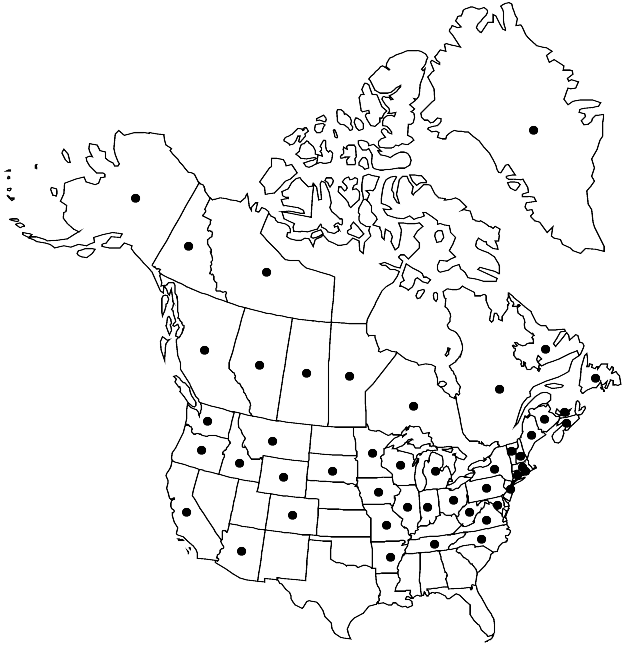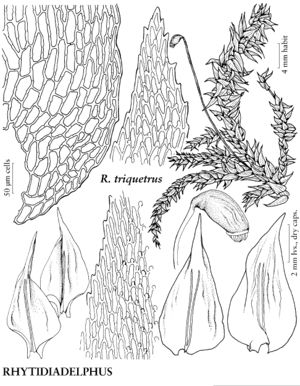Rhytidiadelphus triquetrus
Krypt.-Fl. Brandenburg 2: 920. 1906.
Plants to 20 cm, coarse. Stems 3–8 mm wide across leafy stem, irregularly to unevenly pinnate, branches to 2.5 cm. Stem leaves wide-spreading, heteromallous, crowded at stem apices, ovate-triangular, plicate, rugose, 3.2–4.9 × 1.6–2.5 mm; base cordate-clasping, broadly rounded to insertion; apex gradually narrowed, acumen broad, flat (occasionally rugose); costa 1/2–2/3 leaf length; alar cells slightly differentiated; medial laminal cells 30–55 × 5–9 µm, coarsely prorate. Branch leaves ovate to lanceolate, 1.8–3.1 × 0.7–1.6 mm. Capsule oblong-cylindric, 1.8–3.5 mm.
Habitat: Soil, humus, less often on logs and rock, forests from dry-mesic oak/hickory to wet Thuja swamps, most common in northern coniferous forests
Elevation: low to high elevations (0-2000 m)
Distribution

Greenland, Alta., B.C., Man., N.B., Nfld. and Labr., N.W.T., N.S., Ont., P.E.I., Que., Sask., Yukon, Alaska, Ariz., Ark., Calif., Colo., Conn., Idaho, Ill., Ind., Iowa, Maine, Md., Mass., Mich., Minn., Mo., Mont., N.H., N.J., N.Y., N.C., Ohio, Oreg., Pa., R.I., S.Dak., Tenn., Vt., Va., Wash., W.Va., Wis., Wyo., Eurasia, Pacific Islands (New Zealand).
Discussion
A specimen of Rhytidiadelphus triquetrus from Florida in the Torrey Herbarium (NY) is correctly identified, but the locality is very unlikely. The branches of R. triquetrus are often arcuate-decurved.
Selected References
None.
